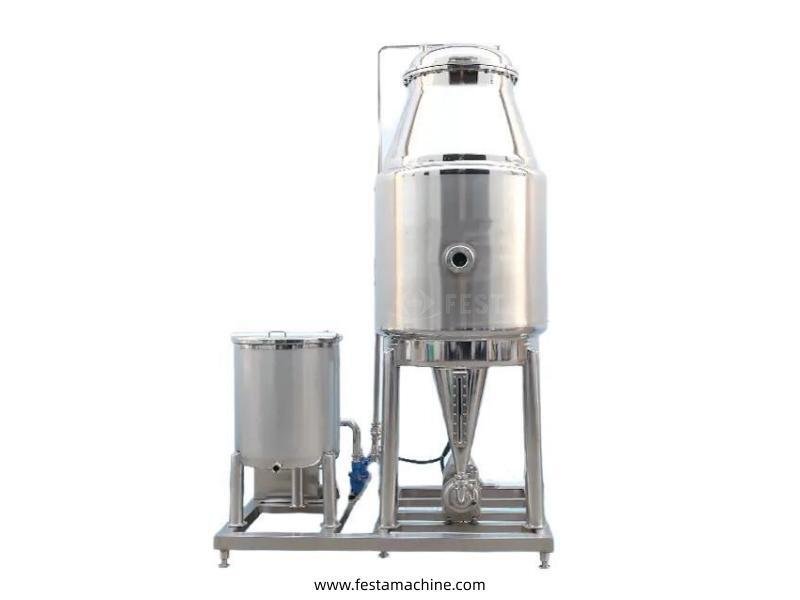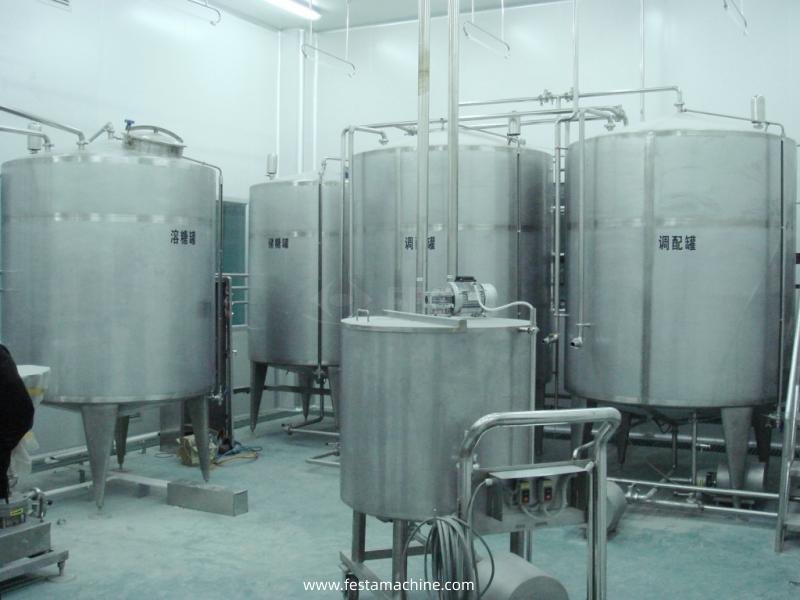Principle of Vacuum Degassing
Vacuum degassing method is the use of gas in the liquid de solubility and the partial pressure of the gas in the page is proportional to the principle of vacuum degassing, the pressure on the liquid surface is gradually reduced, dissolved in the material German gas continues to escape, until reduced to the vapor pressure of the material, reached the equilibrium state, then all the gas is removed. The time required to reach equilibrium depends on the rate at which the dissolved gas escapes and the rate at which it is discharged to atmospheric pressure.

Description
Material degassing
Material degassing purpose: to remove oxygen in the material, prevent or reduce the oxidation of pigment, vitamin C, aroma components and other substances; Remove the gas attached to the suspended particles, reduce or avoid the floating particles, to maintain a good appearance; Reduce the quality of square box products, reduce product bubbles, ensure the filling volume is extremely stable, and ensure the stable operation of the homogenizer; Prevent or reduce the foam produced during filling and sterilization, ensure the sterilization effect, reduce the corrosion in the bottle, etc., degassing is easy to cause the loss of volatile aromatic substances, therefore, when necessary, can carry out the recovery of aromatic substances.
Material degassing method is mainly used vacuum degassing method, in addition to enzymatic degassing method (adding glucose oxidase, etc.) and adding antioxidant degassing method, etc.
Factors affecting the effect of vacuum degassing
When the material is degassed in vacuum, the treated material is pumped into the vacuum tank for air extraction. The degassing effect of the degassing machine is affected by factors such as vacuum degree, material temperature, material ejection surface area and degassing time. For full degassing, the vacuum degree of most vacuum equipment is maintained at -0.0906 — 0.0986mpa. The material temperature to 45-75℃ should be 2-3℃ higher than the temperature corresponding to the absolute pressure in the vacuum tank. In particular, attention should be paid to the determination of material temperature and degassing vacuum degree, to prevent the material from boiling.
In order to fully degassing, the inner surface area per unit volume of the material should be expanded, which is generally used to make the material form a thin film or mist in the degassing machine. There are three methods: centrifugal spray, pressurized spray and film flow.
In addition, to have sufficient degassing time, degassing time depends on the structure of the degassing machine shape, material temperature and material in the degassing tank state. Degassing of materials with high viscosity or solid content is difficult, so the time should be increased appropriately.
Vacuum degassing in juice production
In fruit juice processing, the deoxygenation of fruit juice is mainly carried out by vacuum degassing and deoxygenation, so that the juice is dispersed into film or mist under vacuum condition and deoxygenation or other gases.




